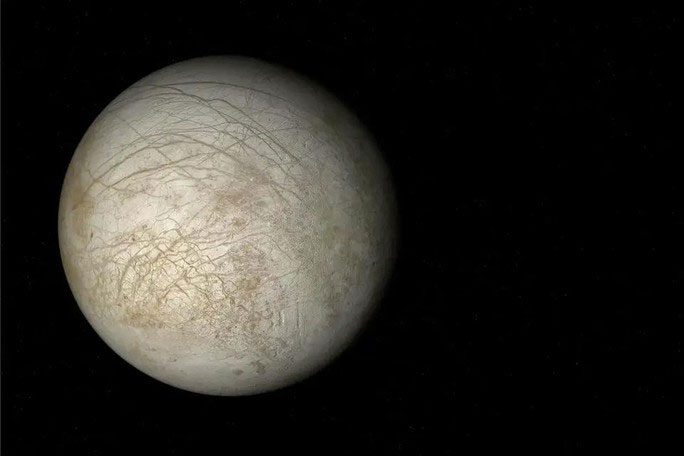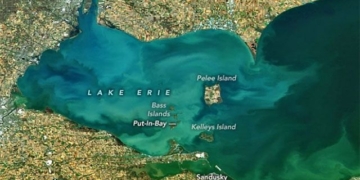The moon of Jupiter, Europa, is considered by NASA as the most promising celestial body for the potential existence of extraterrestrial life in the Solar System, but it may be evolving slowly.
A team of scientists from the School of Earth and Space Exploration at Arizona State University (ASU) in the United States has modeled data collected by the country’s space agency on Europa to understand the activity within the core of this celestial body, as well as the origins of the subsurface ocean beneath its icy crust.

Jupiter’s moon Europa – (Image: NASA).
Despite being just a moon, Europa has a complex structure akin to that of a planet. Preliminary data from NASA indicates that it may contain a rocky core, a mantle, and more, resembling a miniature Earth, surrounded by a global ocean covered by a frozen surface.
“The origin of Europa’s ocean is crucial because the moon’s potential to support life depends on the chemical components and physical conditions involved in the formation processes of the ocean,” said co-author Kevin Trinh, as reported by SciTech Daily.
Their model suggests that instead of forming and evolving in the early stages like our planet and most other celestial bodies, Europa is evolving slowly over time.
“The ‘interior’ of the planet is still undergoing development throughout its existence, with the metallic core possibly having formed only billions of years after the entire body began to accrete.
This is bad news. A metallic core is associated with the internal heat of a celestial body, generating thermal energy that drives underwater volcanic activity and creates habitable zones.
In contrast, Europa began with a cold mix of ice, rock, and metal. According to the authors, this moon is too small to generate enough energy to activate the processes that form a metallic core and powerful underwater volcanism like Earth.
It may still do so, but very slowly, aided by thermal energy from tidal interactions with Jupiter, which NASA has previously documented.
As a result, Europa’s current seafloor may still be quite primitive, fractured, hydrated, and experiencing minimal volcanic activity.
This also implies that the possibility of life existing on Europa is uncertain.
However, this concerning news is not enough to deter scientists from exploring this celestial body, which shares many Earth-like features. NASA plans to launch the Europa Clipper in October 2024, which is expected to arrive in April 2030, with the primary goal of searching for evidence of extraterrestrial life.


















































